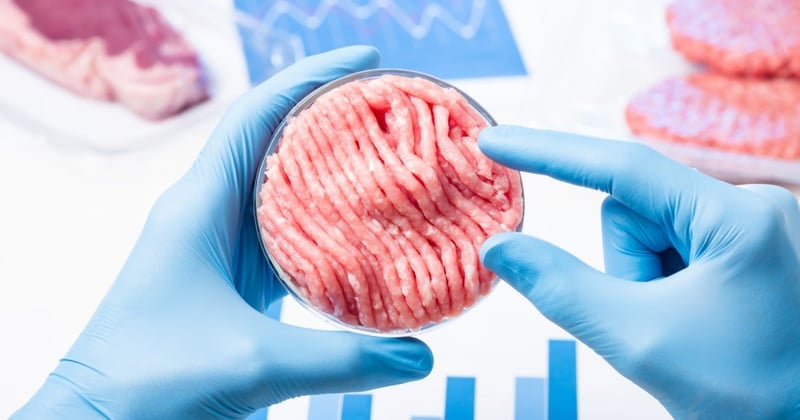
The new meat production method on the rise.
News broke in June that two companies have been approved to sell their cell-cultivated chicken products to consumers in the US. It’s been a few years since the first ever cell-based product launched for sale in Singapore from the company Eat Just (the maker of JUST Egg), and the news brought cell-based meat back into the public conversation.
If you’re wondering what, exactly, is “cell-cultivated” meat, how is it different from meat from slaughtered animals, or when products will be available to the general public, you’re not alone. In fact, recent surveys have found that roughly 60% of Americans are not at all familiar or have not heard of cultivated meat.
Well then, what is cell-cultivated meat?
Cell-cultivated meat (you may have also heard cell-based meat, cultivated meat, lab-grown meat, or even “clean” meat used in other conversations) is animal tissue grown directly from animal cells. Using a culture media—a substance containing the nutrients and growth factors needed to grow cells outside of a body—the cells start to divide, becoming trillions of cells that are combined, built up, and stretched to form muscle tissue. With a variety of source cells, culture media, and processes, companies can produce a range of whole muscle tissues that would otherwise require the death of a chicken, pig, cow, turkey, or fish. Source cells taken from a few animals could produce huge volumes of meat.
How is it different from conventional meat?
As noted above—and top of mind for animal advocates like us—cell-cultivated meat offers slaughter-free animal products. It has the potential to dramatically reduce the number of animals forced into factory farming systems (currently over 9 billion animals in the US each year alone).
But that’s just one attribute that carries the potential for a more humane and sustainable food system. Cell-cultivated products have the potential to dramatically reduce the amount of land, water, and other resources currently used to produce conventional animal proteins. Producing meat by raising animals requires huge amounts of land to grow their food and growing feed crops represents nearly 80% of the greenhouse gas emissions of raising chickens in factory farms, and 50-70% of emissions from raising pigs. In contrast, research has shown that cell-cultivated meat is three times more efficient in using land to produce meat than chickens, and has the potential to have lower carbon footprints than raising cows and pigs as well.
Researchers have also demonstrated how, if built out in a more decentralized structure, cell-cultivated meat has the potential to address food security challenges common with centralized animal agriculture (e.g. factory farming). Reduced risk of zoonotic disease outbreaks and the flexibility offered by the shorter production timelines could mitigate the challenges of the current system.
So, what does this news really mean? Can I buy cell-cultivated meat now?
With the latest news toward the end of June, both companies can now market their products in the US. But, the cost of production is still high so the initial launch for both products will be at just a few high-end restaurants. Many are no doubt curious about how far we may be from seeing cell-cultivated meat in stores. As they expand their production capacities, and as other companies go through the approval process, cell-cultivated products will be able to reach a wider market.
Stay tuned for updates on this story as well as the cell-cultivated meat overall!